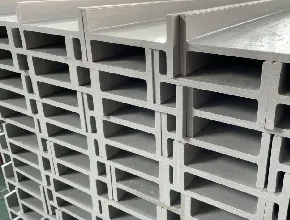loading...
- No. 9, Xingyuan South Street, Dongwaihuan Road, Zaoqiang County, Hengshui, Hebei, China
- admin@zjcomposites.com
- +86 15097380338
- Welcome to visit our website!
glass fiber reinforced polymer rebar
Glass Fiber Reinforced Polymer Rebar Revolutionizing Construction Materials
In recent years, the construction industry has witnessed a remarkable transformation, driven by the need for sustainable and durable materials. One of the most innovative products to emerge is Glass Fiber Reinforced Polymer (GFRP) rebar. This advanced material is changing the landscape of reinforced concrete structures, offering an array of benefits over traditional steel rebar. In this article, we will explore what GFRP rebar is, its advantages, applications, and potential future in the construction field.
What is GFRP Rebar?
Glass Fiber Reinforced Polymer (GFRP) rebar is a composite material made from a polymer matrix reinforced with fiberglass. The manufacturing process involves combining glass fibers with a polymer resin, creating a lightweight yet incredibly strong and flexible material. GFRP rebar is non-metallic, which distinguishes it from traditional steel rebar, and is typically produced in various diameters and lengths to suit different construction needs.
Advantages of GFRP Rebar
1. Corrosion Resistance One of the most significant benefits of GFRP rebar is its outstanding resistance to corrosion. Unlike steel, which can rust when exposed to moisture and chemicals, GFRP rebar maintains its integrity in harsh environments, such as those with high salt exposure or acidic conditions. This feature extends the lifespan of structures, making GFRP an appealing choice for projects in coastal areas or places with high rainfall.
2. Lightweight GFRP rebar is much lighter than steel rebar, making it easier to transport and handle on construction sites. This reduction in weight can lead to lower transportation costs and faster installation times. For large projects, such as bridges and buildings, the benefits of weight savings can be substantial.
3. Cost-Effectiveness While the initial cost of GFRP rebar may be higher than that of traditional steel, its long-term benefits can lead to cost savings. The reduction in maintenance and replacement costs due to its non-corrosive nature means that projects using GFRP can be more economical over their lifespan. Additionally, the light weight can reduce labor costs associated with handling and placing rebar.
4. Non-Conductive Properties GFRP rebar does not conduct electricity or heat, making it ideal for specific applications where electrical conductivity may pose a risk. This feature is particularly advantageous in projects involving electrical installations or areas prone to electromagnetic interference.
glass fiber reinforced polymer rebar

5. Flexibility and Strength Despite being lightweight, GFRP rebar exhibits impressive tensile strength. Its flexibility allows for easy bending and shaping, making it suitable for various architectural designs. This adaptability can contribute to more creative and resilient structural designs.
Applications of GFRP Rebar
GFRP rebar is being increasingly used in various sectors of construction. Some common applications include
- Bridges Many modern bridges incorporate GFRP rebar due to its corrosion resistance, ensuring longevity and reducing maintenance costs. - Parking Structures In environments where de-icing salts are prevalent, GFRP rebar helps protect against corrosion in parking garages. - Marine Structures Piers, docks, and seawalls benefit from GFRP's resistance to saltwater corrosion, making them excellent candidates for GFRP reinforcement. - Infrastructure Projects Roads, sidewalks, and tunnels are increasingly utilizing GFRP to enhance durability in adverse weather conditions.
Future Prospects
The future of GFRP rebar in construction looks promising. As awareness grows about the material's advantages, more architects and engineers are likely to integrate it into their designs. Ongoing research and development are expected to enhance GFRP technology, leading to improved formulations and more efficient manufacturing processes.
Moreover, with the global push toward sustainable building materials and practices, GFRP rebar is poised to gain traction as an eco-friendly alternative. Its recyclability also aligns with the movement toward sustainable construction, appealing to an increasingly environmentally conscious market.
Conclusion
Glass Fiber Reinforced Polymer rebar represents a significant advancement in construction materials technology. With its impressive strength, lightweight properties, corrosion resistance, and versatility, GFRP rebar stands out as an ideal choice for modern construction needs. As the industry continues to evolve, the integration of GFRP rebar into more projects could very well define the future of resilient and sustainable infrastructure.
-
Transform Your Spaces with FRP Grating SolutionsNewsNov.04,2024
-
The Versatility and Strength of FRP RodsNewsNov.04,2024
-
The Excellence of Fiberglass Water TanksNewsNov.04,2024
-
The Benefits of FRP Grating for Your ProjectsNewsNov.04,2024
-
Elevate Your Efficiency with FRP Pressure VesselsNewsNov.04,2024
-
Welcome to the World of FRP Pressure VesselsNewsOct.12,2024
-
Unveiling the Future of Filtration: Why FRP Filter Vessels are a Game ChangerNewsOct.12,2024
